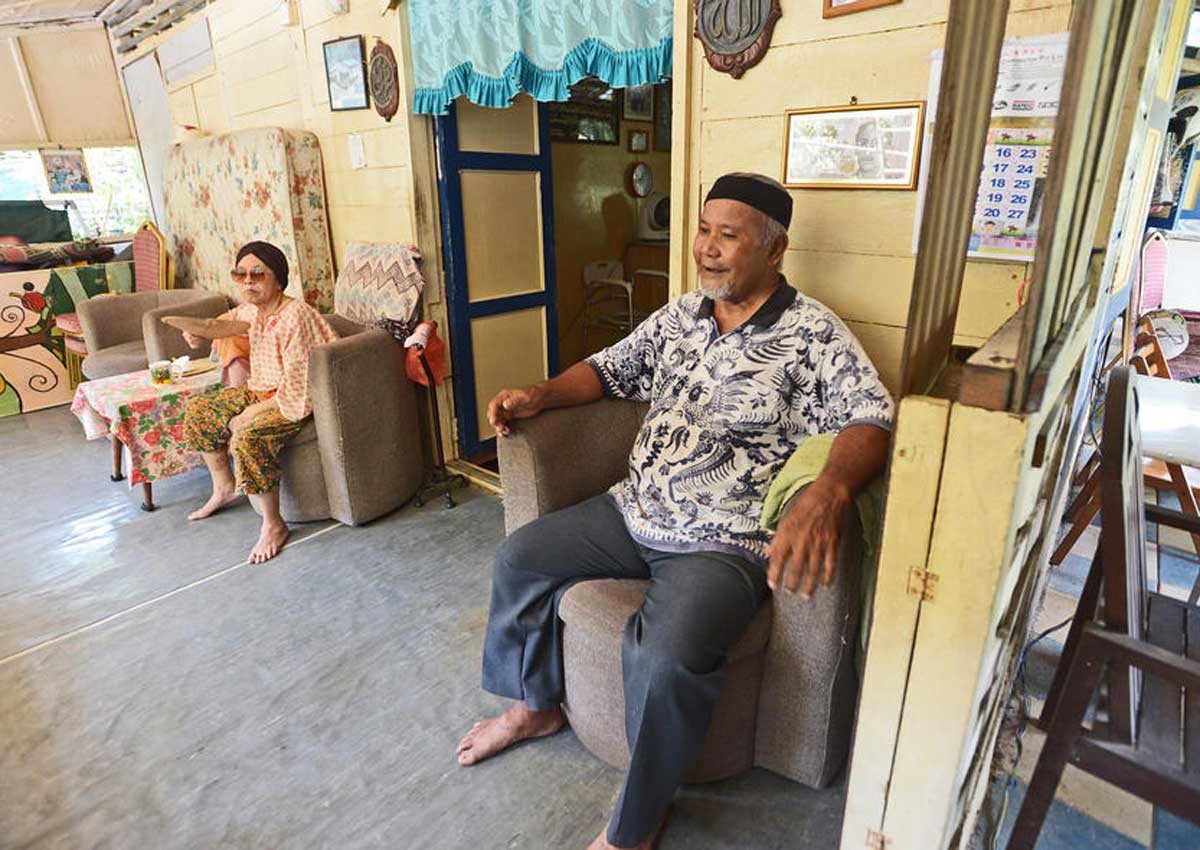One of the few Singaporeans who know how to build and repair kampung houses and dig wells still resides on Pulau Ubin.
Mr Ahmad Kassim is 80 years old and has been living on the island for 70 of them. He can rattle off the various steps involved in what is usually a two-month process of building a kampung house.
“You go into the forest to collect suitable wood, lay the foundation, build the frame… Eventually, you add the zinc roof,” he said.
“It takes gotong royong (kampung spirit) to complete it.”
His expertise was uncovered and recorded by anthropologist Vivienne Wee and her research team as part of the first comprehensive study of Pulau Ubin’s living heritage.
Dr Wee, managing director of anthropology company Ethnographica, was commissioned by the National Heritage Board (NHB) to map the island’s social history.
Her year-long research, which has just concluded, recorded about 90 structures, including houses, huts and coops, on the 10.2 sq km island, off the north-eastern coast of mainland Singapore.
It also identified other skills of islanders, including the cultivation of indigenous fruits, herbs and spices; fishing and crabbing by line, hook and trap; and having knowledge of wildlife such as hornbills and wild boars.
The study further puts to rest the assumption that the island is a sleepy backwater island in decline.
Previous newspaper reports said there were 38 official residents on the island – down from 2,000 between the 1950s and early 1970s. But Dr Wee’s research has found that there are more than 130 people who live and work on Pulau Ubin.
She has also identified a “kampung-centred social network founded on kinship, neighbourly relations and friendship” on the island.
She said the network is not only thriving but also extending beyond the island’s shores to include non- residents and regular visitors.
Capturing ‘way of life rooted in our history’
Younger Singaporeans are also integrated into the day-to-day affairs of Pulau Ubin. The island gets about 300,000 day trippers annually.
Dr Wee said they are tied to the island through informal apprenticeships, fitness and leisure, or because of their family businesses.
For instance, financial consultant Emily Chia, 26, returns to the island thrice a week to help her father run the family’s bicycle rental shop. “I really love this place, the people and the way of life,” she said.
Dr Wee said the constant flow of non-residents to the island and their induction into the network reflect that it is likely to continue to grow, expand and evolve.
The project also documents different aspects of Ubin’s unique island heritage, including the social history of the island, religious practices and festive events, such as the annual six-day-long Tua Pek Kong Festival, which drew 5,000 people last year.
Dr Wee said the study is significant as it captures “a way of life that is rooted in our history”.
First suggested by the Singapore Heritage Society, the project is one of NHB’s contributions to The Ubin Project, led by the Ministry of National Development.
The ministry is working with the community and other government agencies through its Friends of Ubin Network to gather ideas on how to maintain the island’s rustic charm. Its plans include preserving Pulau Ubin’s nature, biodiversity and heritage.
Mr Alvin Tan, NHB’s assistant chief executive of policy and community, said the project’s findings will help the authorities develop sensitive strategies to retain and enhance the island’s heritage and “ensure its transmission from one generation to another”.
Those interested in learning more about Pulau Ubin can catch the premiere of film-maker Royston Tan’s new documentary on May 14 on the island’s wayang stage as part of this year’s Singapore HeritageFest.
A 25-minute documentary capturing Dr Wee’s research is available on NHB portal Roots.sg.

This article was first published on April 29, 2016.
Get a copy of The Straits Times or go to straitstimes.com for more stories.






